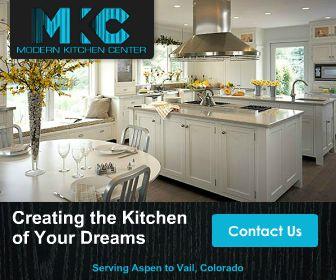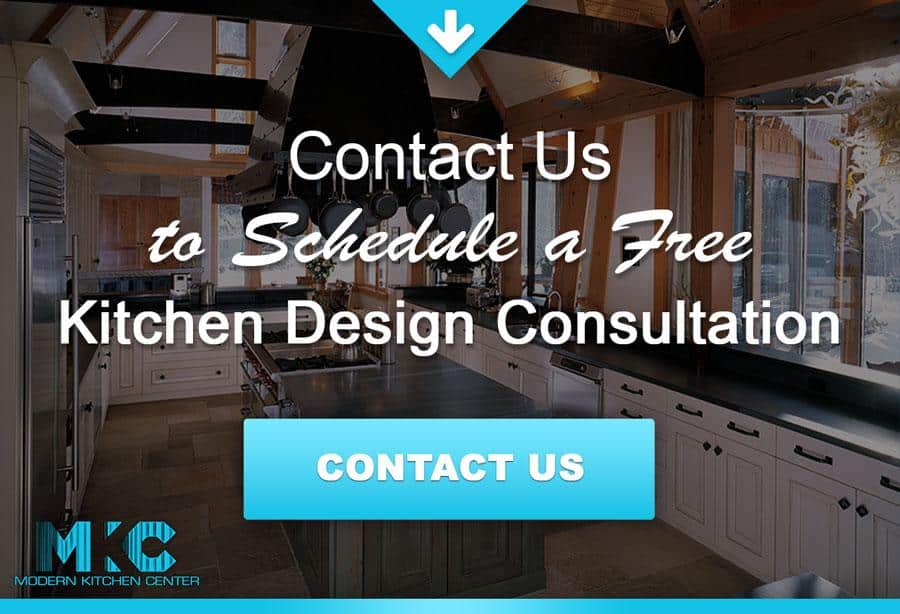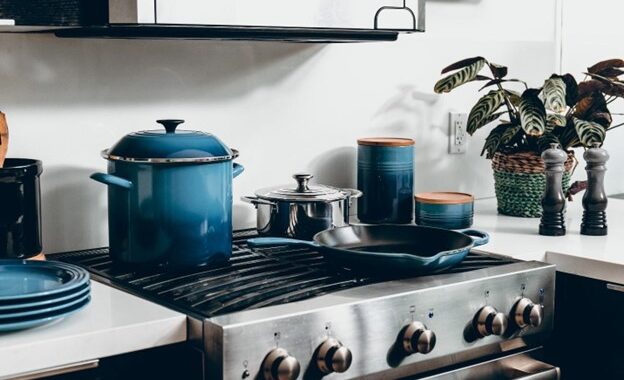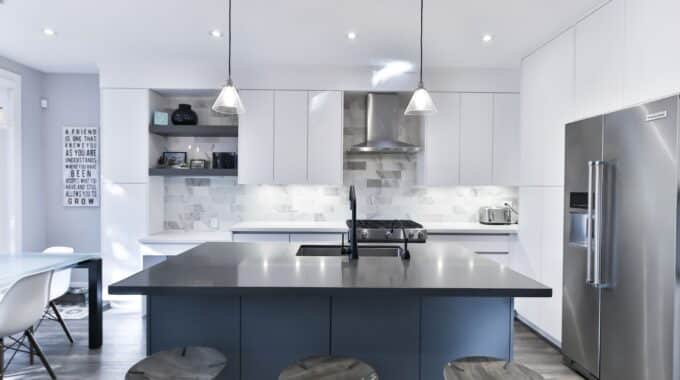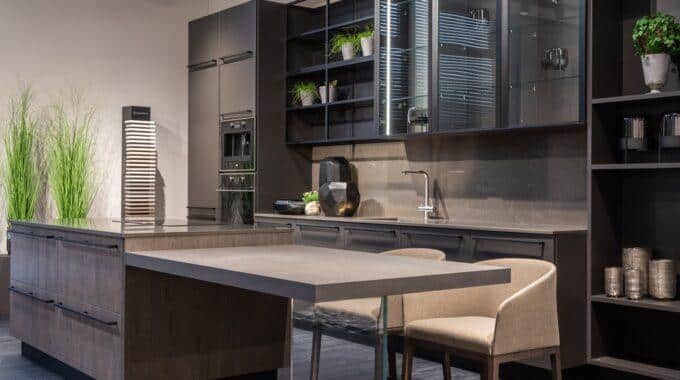
Give Your Kitchen a Makeover | Budgeting and Design Layout for Kitchen Renovations
Do you struggle with the lack of storage space in your kitchen? Dim lighting? And not enough work surface to work efficiently? Is the urge to undergo a kitchen renovation project too real to ignore?
Before you begin thinking about the color scheme and the sort of cabinetry you wish to install, it’s important to consider the nitty-gritty details of the project first: a functional design layout, the square footage of the space, and the building codes of your locality. Hiring contractors and skilled labor will do all the heavy lifting for you. Plan out your dream kitchen with expert designers at Modern Kitchen Center for your renovation needs and assistance.
In this article, we will be going over different aspects of kitchen remodeling and what to consider, as well as how to budget for your kitchen remodeling project.
What to Consider When Remodeling Your Kitchen
Your kitchen is the heart of the home, and it should reflect you and your family’s lifestyle. The remodeled kitchen should meet your cooking needs, provide enough countertop space and storage space too. Before you being choosing appliances and going over cabinetry inspirations, you must first consider the following factors:
1. Size of the Kitchen
Every inch and square footage of the space is important, and your kitchen remodeling project should follow a layout that will bring out the most of the functional space. Especially if you have a small kitchen – the size will determine the final layout of the kitchen. Think about whether you have enough space to fit an island, a prep sink, or even a pantry. You can even consider breaking a wall down to extend the floor area.
2. Existing Layout of the Kitchen
According to professional interior designers, the windows and doors are usually in the place you want them to be. But that does not mean that you can’t switch up the existing layout if it doesn’t go with your style. There are several ways to modify the layout of your kitchen – click here for the best design layout for your kitchen renovation project. To improve efficiency while prepping food and working in the kitchen, you can even include a peninsula to accommodate your cooking routine.
3. Inspect the Infrastructure
The thing with remodeling old kitchens is that you might run into electrical and plumbing issues. The professional architect-engineering team will run a thorough examination of the kitchen to ensure that the foundation is sturdy enough to support the new technology you’ll be installing. Crooked walls and sagging floors are common when renovating your kitchen, but it’s nothing Modern Kitchen’s team can’t handle.
4. What’s Your Lifestyle Like?
How do you use the kitchen? Do you like to entertain people in the kitchen while sitting around the island? Do your kids complete their homework in the kitchen while you prep dinner? These are a few questions that you must answer for yourself when deciding to remodel your kitchen. The best way to think about important aspects of your kitchen is by considering the issues and problems you face. The plan for your new kitchen will be designed keeping these details in mind.
5. Budgeting
No doubt, a kitchen renovation can put a serious dent in your wallet. However, when deciding the features you want to include in your kitchen, consider where you want to save money and where do you want to splurge. To set a realistic budget for kitchen remodeling, set a figure that is 6 to 10% of the total value of your home. We will be discussing how to budget your kitchen renovation project in more detail.
How to Budget Your Kitchen Renovation Project?
As mentioned earlier, the budget for your kitchen remodeling project should be at least 6% of the total value of your house. However, do keep in mind that the labor cost might end up exceeding what you had initially planned to spend due to unexpected and unforeseen circumstances. The average cost of a kitchen renovation project can go up to $80,000. Try to work out your finances and see whether you can afford to spend this much on the project and if it is worth the investment or not. If you plan on reselling the house within 5 years, then the kitchen renovation should add to the real estate value. But, if you are planning on staying for longer than 5 years and even thinking of growing your family, then the renovation project should aim to enhance the comfort of your lifestyle.
The Cost Breakdown
The most costly element of any kitchen renovation project is the cost of new cabinetry. The second biggest chunk of the cost is assigned to the labor and installation fees. The breakdown of a standard kitchen renovation project is as follows:
- Cabinets 40%
- Labor/Installation 20%
- Countertops 10%
- Appliances 9%
- Floor Covering 7%
- Lighting/Electrical 8%
- Wall Covering 4%
- Miscellaneous 2%
Multiple factors will influence your budget. For example, if you are removing a standing wall, the cost of labor will likely increase. If you wish to invest in heavy-duty appliances to assist your cooking passion, then the cost of your project will increase. If you end up encountering electrical and plumbing problems, then resolving the issues will cost you more, and you might end up overspending too. Lastly, the choice of cabinetry, countertops, and materials used for flooring the wall covering will also impact the final budget. We recommend that you discuss all the details with your kitchen renovation project lead to determine where you can save money and the final cost of all the materials you are planning to use.
Kitchen Space Planning
Every kitchen functions differently than the other. Apart from the basic uses of a kitchen, a place to prep, cook, and store food, the role of this specific room has evolved from being a utilitarian space to the hub of the home. Your lifestyle defines the way your kitchen is designed – for a couple who doesn’t cook very often but loves to entertain guests, their kitchen design will be completely different compared to a family of growing kids who will opt for a different floor plan. Since kitchens have become the main gathering area in the house, lots of people are going for functional yet aesthetically appealing designs that reflect their true style.
The traditional layout for a kitchen includes a work triangle where the refrigerator, sink, and cooking range are close to each other. However, modern kitchen designs incorporate designated work zone and activity centers.
Work Zones in Modern Kitchens
A modern kitchen comes with work zones. The work zones that you can consider including in your kitchen are:
- Food zones – includes storage space for groceries, non-perishable items, refrigerated, and frozen foods.
- Dishes and Tools – includes space for dishes, cutlery, glasses, kitchen tools like chopping knives, baking goods, etc.
- Cleaning Items – a designated space for waste management (trash cans, recycle bins, composter, and cleaning supplies)
- Food Preparation – the main work zone where you prepare your food. Includes utensils, appliances, mixing bowls, cutting boards, etc.
- Cooking – storage space for pots, pans, bakeware, Tupperware, and cooling racks.
Tips for Designing the Kitchen You’ll Love
Get yourself a functional yet absolutely gorgeous kitchen with these useful tips. Regardless of the primary purpose of your kitchen, it should be a space that is inviting and makes you feel good by just stepping inside the room. The following tips will help with planning, organizing, and knowing the must-have features every modern kitchen has.
1. Organize your Work Flow
When it comes to organizing your kitchen, think about where and how you use different items. For example, try to keep your breakfast foods and bowls next to or near the breakfast table. Place plastic cling-wrap and plastic Tupperware in cabinets near the station you typically put leftover food in boxes. Try to store your dishes and cutlery near the dishwasher to make the process of unloading easier.
2. Wide Walkways are the Way to Go
Your floor plan should include enough space between cabinets and the island so you can easily walk through the space. The general rule of thumb is that the walkways should be at least 36 inches wide throughout the kitchen. The aisles linked to the cooking station should be at least 42 inches wide if you have a single-cook kitchen. In case you have two-cook placement, then the aisle should be a minimum of 48 inches wide.
3. Pay Attention to Corners
When installing the appliances and cabinets, make sure you stay clear of the corners, and there’s clearance for the cabinet doors to easily swing open. Pay close attention to the placement of the appliances. Try to keep the appliances away from the corners, so the doors don’t get in the way when they are open.
4. The Purpose and Function of the Island
Kitchen islands are a must-have to bind the kitchen together. When it comes to installing a kitchen island, the form always follows function. If you wish to use the island as a countertop to prepare, cook, and eat food, then try to make sure it is big enough to keep the stovetop and dining area separate. For additional functionality, you can even choose to incorporate the dishwasher or sink on the island.
5. Countertops for Preparing Food
The way you use your kitchen to prepare food will determine the choice of countertop. Homeowners who enjoy preparing elaborate entrees will need more countertop space compared to those who don’t cook that often or prepare simple meals. If you have growing children who enjoy helping out in the kitchen, you can even incorporate two countertop heights for easy access.
6. Pot-Filler Fixture
Do you find yourself struggling every time you have to carry the water-filled pot from the sink to the stovetop? The most efficient solution is by installing a pot-filler – the faucet gets installed on the backsplash right over the stovetop. There are plenty of retro and vintage designs to choose from, and you can even select a color that will compliment the accents of the rest of the kitchen.
7. Tactical Placement for Knives
Instead of storing your cooking-grade knives in drawers or knife blocks, you can opt to install a magnetic strip over the backsplash where you typically prepare meals and cut foods. The open display will help you spot the right knife for when you’re prepping food.
8. Include a Message Center
If you have a busy household where everyone has different schedules and is assigned chores, consider making a message center that everyone can view. Typically next to the refrigerator, you can choose to place a bulletin board, family calendar, to-do lists, grocery lists, and the like. You can even include wall-mounted baskets that can store notebooks, stationary, and the mail that you receive.
9. Place Plenty of Electrical Outlets
Make sure that when you’re undertaking a kitchen renovation project, you have plenty of electrical outlets – especially in areas where you have to plug in your appliances like a coffee maker, blender, toaster oven, etc. If you plan on installing an island, try to install electrical outlets on it as well. Install multiple outlets along with the backsplash behind the countertop so you can use multiple appliances at once. To take it one step further, you can even install hidden charging USB ports.
The Bottom Line
Kitchen renovation can be one of the best ways to give your entire house a new feel. By modifying the floor plan, switching the cabinetry, and installing new appliances, you can give your kitchen a makeover. When it comes to setting the budget, make sure that you stick to the figure you have in mind, but expect the bill to go up if you encounter any major problem.
Click here to find out more about how to give your kitchen a new look.



